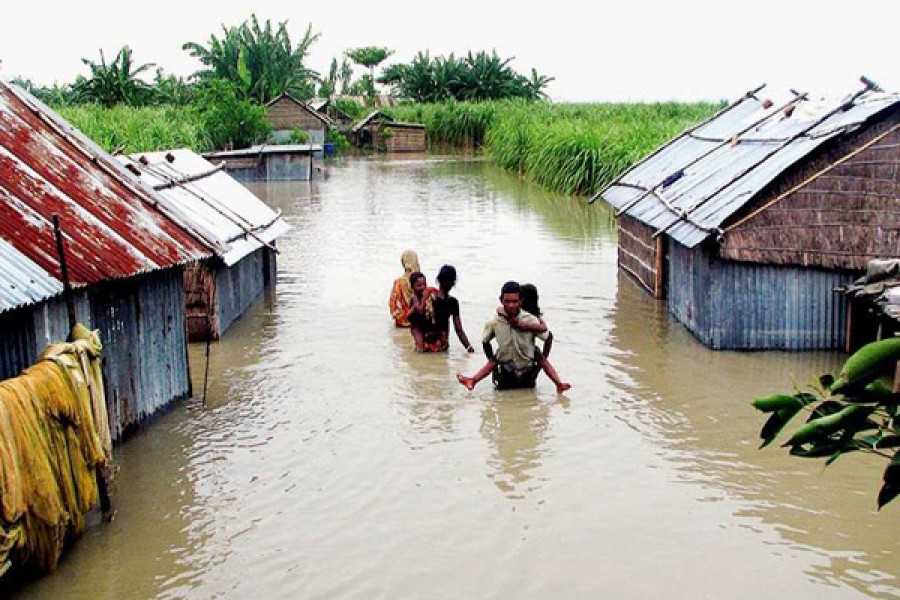As people in the greater part of the country's mainland are engaged in reminiscences over their Eid-ul-Azha celebrations this year, many others are busy overcoming their days of a desperate struggle. Those were fighting to save their homes from the flash-flood waters, arranging a morsel of food for survival, saving their domestic cattle and poultry and searching for safe shelters. In a vast swathe of the country in its north and northeast, millions of people lost means of survival, including property ---both movable and immovable. In parts of the flood-hit districts of Sylhet, Sunamganj, Netrakona and a number of 'haor' areas, the flood victims have yet to come out of the temporary flood shelters. To add to their woes, the outbreak of water-borne diseases in many areas has emerged as a fresh scourge, with few emergency health services in sight.
Against this distressing backdrop, the imperative for rehabilitation warrants more immediacy than the sadness over missing the Eid festivities. Coming to rehabilitation, the harsh reality that tells it all is no visible activities have yet to be seen in this regard. Hundreds of concrete roads, embankments, bridges etc now lie damaged or dilapidated. Improvised and weakly built houses, schools and local government offices are in a state of disrepair. Signs of post-flood mess-up are everywhere, leading to a feeling of helplessness in vast riverside and 'haor' areas. To its credit, this nation has customarily shown its promptness in responding to the imperative of setting up infrastructure to rehabilitate the disaster-hit people but sadly such initiatives are missing now.
That the government agencies have failed to stand by the recent flood-affected people in the north and northeast regions is becoming evident as the water has started receding from some areas. It seems ironical as one recalls the promises of the higher authorities. They said effective rehabilitation programme would be undertaken immediately after the flood water started receding. Unfortunately, it didn't happen. Hundreds of flood-hit people could still be seen languishing in the makeshift shelters.
The country is now passing through a manpower dearth. A number of experts have pointed out the mega shifts of manpower to the recently inaugurated Padma Bridge project. This and some other large projects may have led to a dearth of human resources for a massive rehabilitation programme in a flood-hit region. That the installation of the Padma Bridge project warranted the assemblage of a large workforce is beyond any debate. In spite of this, a tiny portion of resources saved from its funds kept for auxiliary works could have bailed out a large segment of the flood-hit people. A distressing aspect is the promises of myriad types of material support and solidarity coming from responsible quarters didn't deliver. However, a number of local Members of Parliament (MPs) came up with their monetary and food support on their own. Meanwhile, the Bangladesh Army has distributed large volumes of relief goods among the flood-hit people in greater Sylhet. So has the BGB. The local MPs can work in their constituencies. As people's representative, they should present a clear and authentic picture of material support for people. Once convinced of the people's requirements, the government will feel the urgency of prompt and targeted release of relief funds for flood victims.


